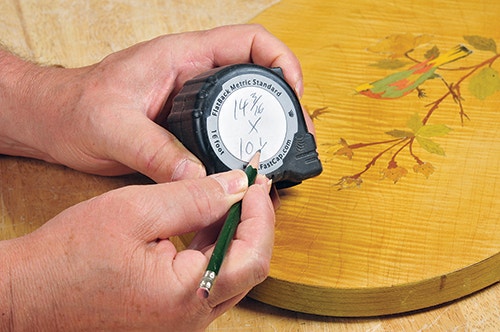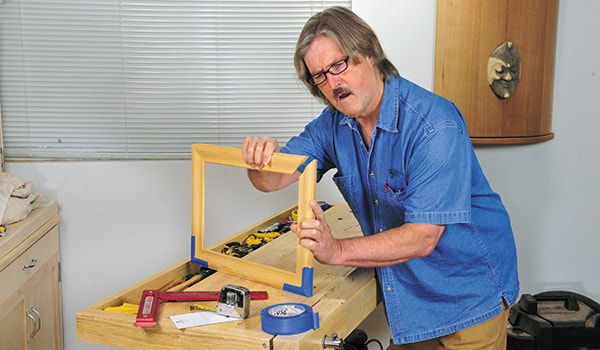Measurement Advice: Transferring Measurements
Here's a workshop measurement problem that’s all too common: You measure an opening on a cabinet carcass for a door, but by the time you get to the saw to cut the door's stiles and rails, you've forgotten or (worse) remembered the dimensions incorrectly.
Writing measurements down on a notepad is an obvious solution but often isn't practical. Here are two workable solutions:
1. Use your smartphone to record the dimensions, then play the audio back when you're ready to set the saw to make your cuts.
2. Write the dimensions directly on the side of your tape measure. Some tape measures come with an erasable notepad surface you can write on with a pencil.

Another common measuring mistake can occur when transferring measurements from plans or drawings created in scales other than full size. To avoid errors, don't use a regular ruler to measure your plans and then convert the dimensions; it’s just too easy to screw up (quick: If 1/4" equals 1", then 13-11/16" equals how much?). Instead, switch to an architect's rule and use the scale that matches the scale of your drawing.

A typical architect's rule is triangular in cross-section, with six different commonly used scales: 1" = 1', 1/4" = 1', 3/8" = 1', etc. The correct scale will show part dimensions directly; no conversion necessary. To avoid accidentally using the wrong scale, mark the correct one with a piece of tape. Take special care when reading/transferring measurements for ready-made windows and doors from a manufacturer's drawing or spec sheet. The standard for windows and doors is to show or describe them in terms of feet and inches. For example, a 60"-tall by 18"-wide window would be "5-0" x "1-6". It's easy to accidentally interpret the 5-0 measurement as 50 inches.
Further, a window of any certain specification may not be drawn to precise size on an architect's drawing or builder’s plan. If you're building a project from plans published online or in a book or magazine article, make sure to check all measurements carefully before cutting out expensive stock. Despite the best efforts of authors and editors (including me!), gremlins do sneak in at times and foul up the dimensions shown on plans and in cut lists.
Keep the inspiration coming!
Subscribe to our newsletter for more woodworking tips and tricks



